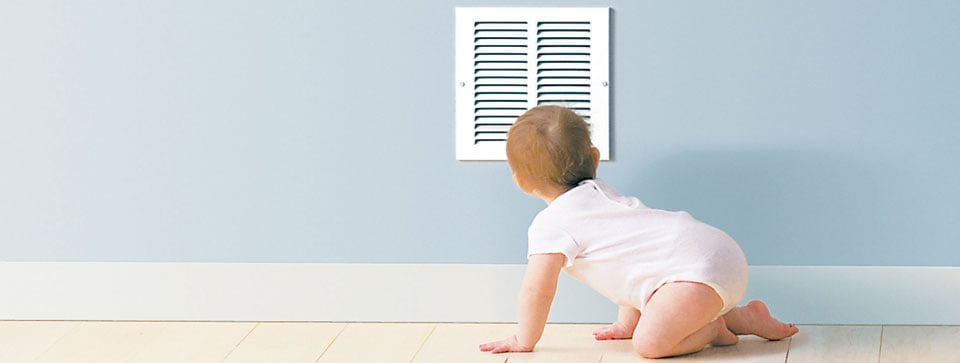It’s often said the air inside our homes can be worse than the air outside. And with the weather heating up and many of us resorting to closing windows and turning on the air conditioning, poor indoor air quality can be a problem.
How can the air inside be “dirtier” than what’s outside? Simply through ventilation, or rather, a lack of it.
Homes today are built (and renovated) much tighter than they used to be for greater energy efficiency. While that’s a good thing because it reduces our heating and cooling costs and keeps our homes feeling more comfortable, there can be a downside.
That greater energy efficiency means homes are sealed so well they don’t breathe. Older, leakier homes don’t have as much of an issue with poor indoor air quality because there is enough stale, inside air escaping through window and door seals and drafty siding — and being replaced by outdoor air — to keep homes relatively fresh.
But in a more energy-efficient home, less stale air escaping means a greater build-up of things like humidity — from showering, cooking, and even breathing — as well as pollutants such as dust mites and toxins that are released into the air from off-gassing furniture and other household items, personal care products, even hobbies.
When humidity, pollutants and toxins can’t escape, it causes issues for both us and our homes. One of the worst of these is humidity. Too much of it encourages the growth of mould — the nasty, usually black stuff that grows on just about anything and particularly likes drywall. And mould has been shown to lead to or worsen all kinds of respiratory issues. Too little humidity isn’t good either. It can result in things like a dry nose and throat, dry and itchy skin, and an increased risk of catching a cold.
But it’s not just people who are affected by improper humidity levels. Your home doesn’t like it either. Indoor humidity levels should be between 30 to 50 per cent. Too high and it leads to condensation on windows and walls that can cause structural damage from rot and mould, plus it warps wood such as your hardwood floors. Too low and it can also damage wood and drywall, cause your wood floors to shrink and even lead to pianos going out of tune.
So, what’s the solution?
You could simply open windows to get fresh air, but what’s the point of having a tight home if you’re going to waste energy that way? Sure, we know that having to open windows in winter lets too much heat escape, but who doesn’t like throwing open the windows in summer to feel more of a connection to the outdoors?
The problem is that in the Ottawa area, we get a lot of humidity and, with open windows, it can be difficult to keep the humidity levels inside our homes at the optimum level.
That means your best bet is a properly installed HVAC system. HVAC stands for heating, ventilation and air conditioning. In many cases, that means ensuring mechanical ventilation in the form of a heat recovery ventilator or HRV, also known as a heat exchanger. HRVs take the stale air out of a home while bringing fresh air in. The heat or cool of the outgoing air is captured to be absorbed by the incoming air, without the two air streams mixing, to save the energy in your home.
While HRVs are common on new homes today, they also need to be considered for renovated homes.
And it’s also important as part of a major remodelling of your home to evaluate your mechanical systems to make sure they are still the right size. Why? Because making an older home more energy efficient can mean the furnace or air conditioner is now larger than required to heat and cool your space. And oversized heating and cooling systems won’t work as efficiently or effectively to keep you comfortable.
In addition, there are a few things you can keep in mind during your day-to-day living that can help:
- Vacuum often, either with a central vac that vents outdoors or a standalone vacuum that uses a high-efficiency particle air (HEPA) filter to trap small particles.
- Clean the lint tray every time you use the dryer and check for lint buildup on the outside vent.
- Inspect your furnace filter regularly and change when needed. This should be done a minimum of four times a year.
- Use your hood exhaust when cooking (and make sure it vents outdoors).
- Use your bathroom exhaust fan when showering.
- To improve circulation, keep interior doors open and keep heating and air return vents clear of furniture.
- If you have an attached garage, avoid idling your car, gas-powered lawnmower or snowblower in your garage.
- If you have gas appliances, make sure they are installed and running correctly.
Even though indoor air quality might not be a very visible issue in your home, it can still be quite significant. Are you breathing in clean air?


